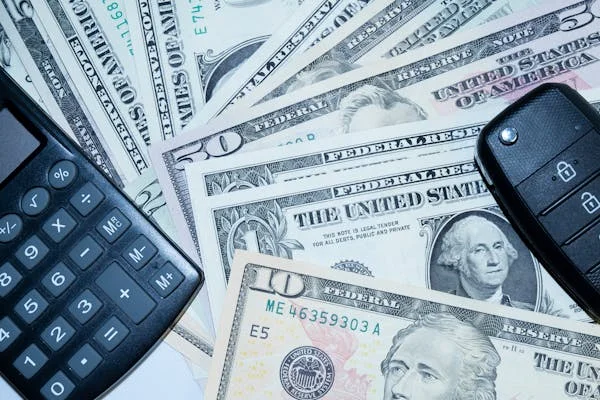Negative equity on a car loan can be a frustrating financial situation. Negative equity means you owe more on your car loan than the car is currently worth. It can occur for a few reasons, such as rapid depreciation, a big loan balance, or bad financial planning. Fortunately, there are ways to help you manage or get rid of negative equity. In this post, we’ll look at some practical ways to get you back on track financially, such as refinancing, making extra payments or trading in your vehicle.
What is Negative Equity?
Before we dive into the solutions, it’s important to know what negative equity is and how it affects your car loan. Negative equity occurs when the amount you owe on your loan is greater than the value of your car in the current market. This is a common situation when the car depreciates faster than you are able to pay off the loan or if you only have a small deposit. If you’re in this position, there are things you can do to minimize the damage.
Common Causes of Negative Equity
There are several reasons for negative equity. One of the main reasons is that cars depreciate quickly after purchase, especially new cars. If you made a small down payment or rolled over existing debt from a previous car loan, you may have created an imbalance in which you owe more than the car is worth. Knowing why you are in this situation will help you determine the best way forward.
Refinancing Your Car Loan
Refinancing your car loan is one of the best ways to get rid of negative equity. This means taking out a new loan to pay off your current loan, hopefully at a lower interest rate or longer term. Refinancing doesn’t directly change the car’s value, but it can make the loan more manageable and possibly cut your monthly payments.
Benefits of Refinancing
If your credit score has changed since the time you first took out the loan, refinancing can lower your interest rate. This would decrease the overall cost of the loan over time. This can also stretch out the loan term and lower your monthly payments, but you’ll end up paying more interest in the long run. Sometimes refinancing can save you from having to make a big lump sum payment to clear the negative equity immediately.
Potential Drawbacks of Refinancing
Refinancing has benefits, but it’s not always a solution if there is a lot of negative equity. If you extend the loan term, your monthly payments might be reduced, but you’ll be paying your car off for a longer period. Refinancing can leave you with negative equity for a longer period of time, so it’s worth considering the pros and cons before taking the plunge.
Make Extra Payments Towards the Loan
One way to deal with negative equity is to make additional payments on your car loan. Paying more than the minimum required will help to reduce the principal balance faster and lower the negative equity.
How Extra Payments Can Help
Additional payments will help you pay off the loan principal faster, reducing the gap between your loan balance and your car’s value. This will gradually reduce your negative equity and put you closer to a positive equity situation where your car is worth more than your loan. If you get a bonus or tax refund, you might want to use it to pay a lump sum to reduce your balance.
Consider Paying Off the Loan Early
Paying off your car loan early, if it’s financially feasible, can help you get out of negative equity more quickly. This option may not be practical for everyone, but if you do pay off the loan early, you will save on interest costs and get out of the situation quicker. Just be sure your loan doesn’t have prepayment penalties.
Trading in Your Car
If you can’t pay off the negative equity, trading in the vehicle may be an option. Keep in mind that if the trade-in value of your car is not enough to cover the outstanding loan balance, you’ll still have to pay the difference.
What to Do When You Trade in a Car with Negative Equity
If you trade in a car with negative equity, it’s probably going to mean you’ll have to roll the remaining balance into the loan on your new car. That means your new car loan will include the amount you owe on your current car and the cost of the new vehicle. This will get you into a new car, but if you don’t address the negative equity, it could make your financial situation worse.
Negotiate a Fair Trade-In Value
If you are planning to trade in your car, negotiate with the dealership to get the best possible trade in value. The higher the amount they offer for your current car, the less negative equity you will have to carry over into your new loan. You may also have to pay off the difference between the trade in value and the loan balance.
Sell Your Car Privately
If the trade-in value doesn’t pay off your loan balance or is too low, try selling the car privately. The trade-ins are likely to fetch lower prices than private sales, which might help to reduce the negative equity. After the car is sold, use the money to pay off the remaining loan balance. By doing this, you will have the opportunity to pay the loan off in full and get out of the negative equity.
The Challenges of Selling Privately
While selling privately might allow you to cover more of your loan balance, it can be time-consuming. You’ll need to manage the sale, handle paperwork, and possibly deal with negotiations. However, if you’re determined to reduce your negative equity, this could be a more profitable option than trading in the car.
Finding a Path Out of Negative Equity
Negative equity on a car loan can feel like an overwhelming financial burden, but there are several ways to tackle it. Refinancing, making extra payments, trading in your car, or selling privately are all viable solutions, depending on your circumstances. While it may take some time and effort, addressing the issue of negative equity will put you on the path to a healthier financial future. Take the time to explore your options, work with your lender, and use tools like car finance calculators to make the most informed decision. With persistence, you can move past negative equity and regain control of your car loan.





